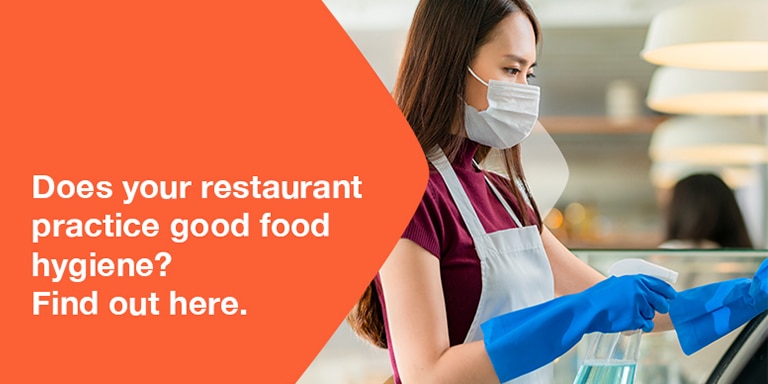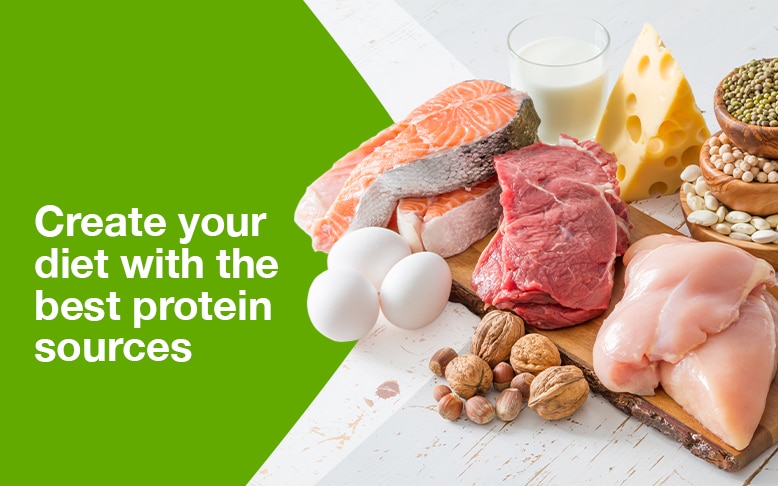Introduction
Every year, an estimated 600 million people suffer from foodborne illnesses worldwide. Of that number, a staggering 420,000 people lose their lives as a result.1 As professionals in the foodservice industry, it is crucial to maintain food safety best practices to prevent such illnesses from occurring.
In order for bacteria to rapidly multiply in food, it must be left at room temperature for some time. Room temperature falls into a range known as the Temperature Danger Zone, which ranges from 5-60°C. When food is left for an extended period within this temperature range, bacteria can rapidly multiply, doubling in number every 20 minutes.2
It takes simple vigilance to make sure neither of these conditions are fulfilled. If you’re careful and consistent, you’ll never have to worry about foodborne illnesses coming out of your kitchen.
Foodborne illnesses, or what we commonly referred to as food poisoning, is a disease caused by eating contaminated food.3 Over 200 different conditions are associated with eating unsafe food ranging from mild diarrhea to more serious and life-threatening illnesses such as kidney and liver failure, neurological disorders and some types of cancer. 4
Professional kitchens and restaurants follow a strict protocol that heavily scrutinizes every step of the food preparation process. When it comes to food, our bodies can be very sensitive. That’s why foodservice establishments are incredibly thorough with their quality assurance.
If It Doesn’t Belong There, It’s Contamination
In a professional dining environment, food borne illnesses come about as a result of contamination. Contamination happens when foreign substances or materials that don’t belong in the dish end up a part of it, either by oversight or neglect. Contamination can be broken down into three categories:
Biological hazards5 refers to the Big Four of bacteria, viruses, parasites, and fungi. These are the greatest threat to food safety, because they’re invisible to the naked eye and in cooked food, can be odorless and tasteless. For biological hazards, a basic level of vigilance and attention can keep them at bay. As long as food is consumed immediately after cooking or stored tightly and refrigerated or frozen, a dish can stay fresh and hazard-free for days and even weeks.
The range of temperatures between 5 and 60 degrees Celsius is known as the Temperature Danger Zone. At these temperatures, bacteria can rapidly multiply, doubling their number every 20 minutes. The longer a dish stays in the danger zone, the more numerous the bacteria become.
Moisture can also encourage bacterial growth. Food should be stored dry and away from sources of moisture to avoid development of bacteria.
Microorganisms also love oxygen. When present, it allows microorganisms to grow in packaged food. To inhibit bacterial growth, the methods of Reduced Oxygen Packaging (ROP) and Modified Atmosphere Packaging (MAP) may be used.5
In the food industry, professional kitchens are expected to maintain a standard of safety and hygiene to create an environment suitable for preparing food. But sometimes, a moment of neglect or oversight means that a cleaning agent might contaminate a dish due to spillage or leakage. When industrial cleaners, fertilizers, pesticides, or other foreign chemicals make contact with or become mixed with the dish, this is called a chemical hazard.6
Something as simple as wiping down the ice cream machine while using too much detergent or dish soap can be considered a chemical hazard. Certain food additives and preservatives may also qualify as chemical hazards. To clearly differentiate safe from unsafe additives, employees should strictly adhere to the relevant guidelines.
Physical hazards6 are common complaints in food service businesses. When a foreign non-chemical object such as hair, fingernails, needles, or staple wire is found in the dish, this is considered a physical hazard. Natural byproducts of ingredients can also be considered physical hazards, such as an avocado pit accidentally included in a dish, or an errant bone in chicken fillet.
These physical hazards can be easily mitigated through the use of personal protective equipment that can hold hair and fingernails securely and by engaging with suppliers that employ stringent quality assurance.
Risk Factors for Foodborne Illness
According to the U. S. Center for Disease Control and Prevention (CDC), these are the top five contributing factors to foodborne illnesses in food service:
- Unsafe/noncompliant suppliers
- Has not passed inspection
- Does not comply with applicable laws and regulations
- Does not employ good food safety practices
- Fails sanitation and production processing requirements
- Establishments must not do business with reputable sellers without verifying these processes of the seller’s:
- Receiving
- Storage
- Production
- Delivery
- Cleaning and Sanitizing
- Personal Hygiene
- Staff Training
- Product Recall
- Improper temperature storage
- Remember the Temperature Danger Zone! Food must be stored or held at temperatures 5°C and colder or 60°C and hotter.
- Improper/insufficient cooking technique
- Religious and consistent monitoring of temperatures
- Contaminated equipment
- Insufficient sanitation of equipment. All equipment and surfaces must be cleaned and sanitized before and after use.
- Untrained staff and improper use of chemical agents
- Poor personal hygiene
- No gloves
- No readily available sink for handwashing
Five Keys to Safer Food
Proper Hand Washing is 🗝️
Effective Sanitation
Frequent cleaning and sanitizing should be done on the following items:
- Prep tables
- Sinks
- Faucets
- Door handles
- Switches
- Kitchen tools and utensils (e.g., chopping boards, can openers)
- Weighing scales
- Freezers and chillers
Washcloth Use
Another area that is often overlooked is the use of wiping cloths. Here are some guidelines on the use of wiping cloths:
Proper Meat Handling
Raw meat, seafoods and poultry have juices that contain pathogens. These fluids can drip and contaminate other food items during storage, preparation and holding. Separating raw from ready-to-eat foods will prevent cross-contamination. Below are some ways to keep foods separate:
- Schedule delivery of raw food and ready-to-eat foods at different times.
- Store raw and ready-to-eat foods in separate freezers/coolers. If stored in the same freezer/chiller, place ready-to-eat foods above raw food.
- Make sure all items stored inside the freezer/chiller are properly wrapped or covered.
- When thawing food inside the chiller, place the raw food in a covered container below ready-to-eat food.
- Prepare raw food and ready-to-eat foods in different areas or tables. If not possible, prepare ready-to-eat foods first, before preparing raw foods.
- Clean and sanitize work surfaces, equipment, utensils and tools thoroughly before beginning a task and in between tasks.
- Use separate equipment, tools and utensils for raw and ready-to-eat foods. Use color-coded equipment, tools and utensils, if possible.
- Avoid bare hand contact with ready-to-eat foods.
- When serving food, use separate utensils for each food item and store serving utensils correctly in between uses.
Cooking Food Thoroughly
The only way to kill harmful bacteria in food is to cook them thoroughly at the required internal temperature.9 If food is not cooked adequately, it might be unsafe for your customers or guests to eat it. Here are some guidelines to follow when cooking food:
- Preheat the oven and griller before cooking.
- Do not let juices or fluids of raw food drip into cooked food.
- Cook food thoroughly, particularly meat, poultry, eggs and seafood.
- The juices of cooked meat and poultry should be clear and not have any pink or red in them.
- Bring soups and stews to a boil. They should bubble rapidly when stirred.
- Reheat cooked food to 74°C for 15 seconds, ensure this temperature is reached within 2 hours.
When cooking food using a microwave, cover the food to prevent it from drying. Make sure the internal temperature of food reaches 74°C.9 Check the temperature twice at different spots. Stir the food half-way through cooking to distribute the temperature evenly. After cooking, let it stand for 2 minutes before serving. Below is the safe minimum internal cooking temperature of each food item.
Minimum Internal Cooking Temperature Table
Proper Thermometer Use
Use of Safe Water and Raw Materials
“Safe food and water” means they are free from harmful microorganisms as well as toxic metals that could cause foodborne illness. Food should only be purchased from approved and reputable suppliers to ensure safety. Special care should be taken when inspecting food. Make sure to select fresh and wholesome foods. Reject items that are damaged and beyond its expiration or use-by dates. Only use potable or drinkable water for prepping food, washing hands and cleaning food contact surfaces. Make sure the water sources comply with the standards for safe drinking water.Knowing is Half the Battle: A Final Message To RNDs
Pro-tip:
Adhere to 4 basic principles of food safety: clean, separate, cook, and chill.


 Elaine Grace S. Gatdula-Cubangbang , RND, CFPM
Elaine Grace S. Gatdula-Cubangbang , RND, CFPM















No comments here yet.